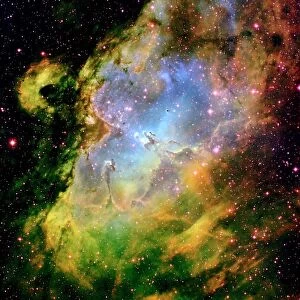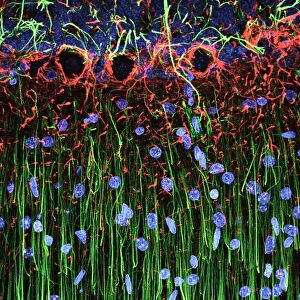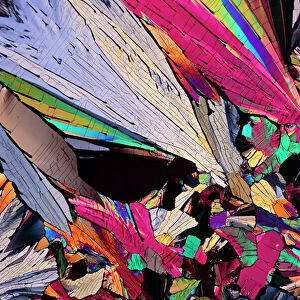Artwork of various galaxies showing red shift
![]()

Wall Art and Photo Gifts from Science Photo Library
Artwork of various galaxies showing red shift
Red shift. Illustration of galaxies distributed in Space, with the furthest galaxies red due to " red shift". This effect was discovered by amateur as- tronomer William Huggins in 1868, who noticed that the light from some stars was further towards the red end of the spectrum. Huggins realised this was due to the Doppler effect: just as the noise of a moving vehicle changes as it passes, so light from a star changes in wavelength as the star moves towards or away from us. Stars moving away more quickly are more red. In 1929 another astronomer, Edwin Hubble, used red shift to show that the fastest-receding galaxies are also the most dist- ant, indicating that the Universe is expanding
Science Photo Library features Science and Medical images including photos and illustrations
Media ID 6443775
© CHRIS BUTLER/SCIENCE PHOTO LIBRARY
Cluster Cosmology Doppler Effect Expansion Galactic Galaxies Galaxy Group Universe
EDITORS COMMENTS
This print showcases an exquisite artwork featuring a mesmerizing array of galaxies, each revealing the phenomenon known as red shift. The galaxies are meticulously distributed in space, with those situated furthest away displaying a striking red hue due to this intriguing effect. This remarkable discovery can be attributed to the keen observations made by amateur astronomer William Huggins back in 1868. Huggins astutely noticed that light emitted from certain stars appeared shifted towards the red end of the spectrum. Further exploration led Huggins to unravel the underlying cause behind this spectral shift - the Doppler effect. Similar to how we perceive changes in sound as a moving vehicle passes us by, light waves undergo wavelength alterations when stars move closer or farther away from our vantage point. Stars receding at higher velocities exhibit a more pronounced reddish tint. In 1929, another brilliant mind entered the scene: Edwin Hubble. Building upon Huggins' findings, he utilized red shift data to demonstrate that galaxies retreating at greater speeds also happen to be located at immense distances from us. This groundbreaking revelation provided strong evidence supporting the notion of an expanding universe. This awe-inspiring artwork not only celebrates these scientific milestones but also serves as a testament to humanity's relentless pursuit of knowledge and understanding about our vast cosmos.
MADE IN THE UK
Safe Shipping with 30 Day Money Back Guarantee
FREE PERSONALISATION*
We are proud to offer a range of customisation features including Personalised Captions, Color Filters and Picture Zoom Tools
SECURE PAYMENTS
We happily accept a wide range of payment options so you can pay for the things you need in the way that is most convenient for you
* Options may vary by product and licensing agreement. Zoomed Pictures can be adjusted in the Basket.




